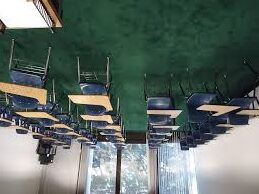
In the “flipped classroom” model, currently used by CUNY Professors Donna McGregor and Pamela Mills in the Chemistry department at Lehman College, content explication is moved out of the classroom, which frees the teacher from delivering content via the lecture format. Instead, that content is ported to an at-home format (e.g., video instruction), and thus allows the opportunity to scaffold in-classroom learning through active learning strategies. In a sense, this model converts the real world into the classroom, because that is where the student will have the most engagement with the subject matter; meanwhile the classroom is where the student will engage with their classmates for a deeper exploration of what they have been learning outside the classroom.
Most importantly, the model works. As reported in a 2017 Inside Higher Ed article by Jennifer Goodman, through trial and error, the flipped classroom model “boosts passing rates to 80+ percent.” The article tells the story of McGregor and instructors at Hunter and Lehman who experimented with the method.
As Professor Alex Berrio Matamoros from CUNY Law School explained in a slide presentation at the 2012 CUNY IT Conference, the flipped classroom helps students at every stage of learning, whether they need individual attention or want to delve deeper into information. It also helps instructors by taking some pressure off the clock (to cram a lecture and skills development into a short class period) and allowing more time for active and engaged learning. He uses a combination of searchable videos, podcasts of the same lectures (to offer students another media option) and slide decks.
There are many ways to apply the flipped classroom model, including in K-12 and to organize professional conferences (and unconferences). You can also read a case study of applying the method to library-business collaboration published on CUNY Academic Works by Madeline Cohen from Lehman College.

